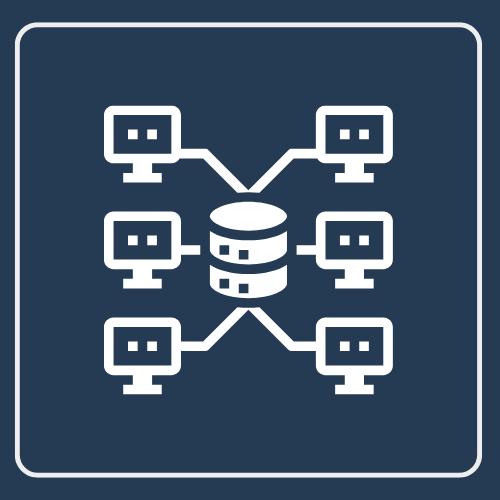SAP Analytics Cloud: user and planning guide
Understand SAP Analytics Cloud: visualization, planning, predictive analysis and intuitive dashboards.
You are here : Home " SAP Guide " SAP Solutions "SAP Analytics Cloud
In many companies, the data is there.
But they are scattered, difficult to exploit, or compartmentalized between teams.
And when you really want to make a decision, you find yourself waiting for an Excel export, reconciling figures by hand, or guessing what that frozen graph means.
SAP Analytics Cloud (SAC) is designed to break down these silos.
And make data a genuine management tool, accessible, interactive and connected to operations in real time.
Introduction to SAP Analytics Cloud
Every company produces data. A lot of it.
But very few really know how to use them.
In most cases, information is scattered in several files, shared between different departments, rarely up to date, and even less usable in real time. As a result, decisions are often taken with a delay, or worse, on the basis of approximate data.
SAP Analytics Cloud (SAC) is the answer to this fundamental problem: transforming data into a daily management tool. Not a vague promise, but a concrete platform, used in the field to analyze, plan, visualize and predict, from a single interface, 100 % cloud.
Where other tools separate BI, planning and forecasting, SAP has brought it all together.
You can create dashboards, manage your budget, simulate scenarios... without changing tools, formats or business logic.
Best of all, you stay connected to your source data, whether it comes from SAP S/4HANA, SAP BW, or even Excel files or an external database.
Key benefits of SAC
One of the great strengths of SAP Analytics Cloud is its ability to work seamlessly within the SAP environment.
No need to use third-party tools to access financial or operational data. It's all there, structured, secure and ready to view.
Another strength is the combination of functions.
With a single tool, you can carry out your reporting, budgets, forecasts and even predictive analyses, thanks to integrated AI. It's this "all-in-one" approach that makes it a true decision-making cockpit.
Finally, SAC was designed with the business user in mind.
The interface is uncluttered, browser-based and requires no plug-ins or installation. This makes it both powerful and easy to deploy within an organization, even without advanced technical expertise.
What needs does SAP Analytics Cloud meet?
SAP Analytics Cloud is not just for controllers or CIOs.
It is used to manage sales, logistics, human resources and production, depending on the situation.
Some companies use it to consolidate performance indicators at group level. Others use it to enable their subsidiaries to build their budgets collaboratively. Still others use it to anticipate margin variances, or simulate the impact of a price increase.
It's not just the tool that makes the difference.
It integrates into processes, in real time, with reliable data.
Analytics Cloud features
SAP Analytics Cloud is not a showcase of pretty graphics.
It's a complete environment, designed to make informed, collaborative decisions, in line with the reality on the ground.
Here's how companies use it every day.
SAC architecture and integration
Understanding what SAP Analytics Cloud does is one thing.
But to adopt it on a corporate scale, another question needs to be answered: how does it fit into my existing information system?
And on this point, SAP has made a real strategic choice: that of flexibility and compatibility.
SAC's native cloud architecture
SAP Analytics Cloud is a 100 % SaaS application, hosted on SAP Business Technology Platform (BTP) infrastructures.
This offers a major advantage: updates are automatic. Every month, SAP pushes out new functionalities without interrupting service. No need for patches, no need for IT intervention. The tool evolves continuously. And your users have instant access.
This is a major advantage for growing or multi-site companies who want to deploy their systems rapidly, without technical constraints.


Connection to data sources (SAP and non-SAP)
Having a nice BI tool is great.
But if it's not linked to the right data, it remains empty.
SAP Analytics Cloud connects natively to :
- SAP S/4HANA (direct or via SAP Datasphere)
- SAP BW/4HANA
- SAP SuccessFactors, Fieldglass, Concur
- And also to non-SAP sources: SQL, Google BigQuery, OData, Excel, Google Sheets...
The connection can be "live" (direct reading in real time) or "acquired" (data imported at regular intervals).
Data security and governance
Of course, the more powerful the tool, the more crucial the question of security becomes.
SAP Analytics Cloud is based on a secure, multi-tenant architecture, with an extremely fine-grained system of roles, permissions and data filtering.
A regional manager sees his own figures, not those of others.
A controller has access to budget data, but not to strategic forecasts.
A junior user can consult, but not modify.
And because SAC is integrated with SAP BTP, it benefits from all standard security certifications (ISO 27001, GDPR, SOC, etc.).
Simply put, you control who sees what, when and how.

Cloud architecture, simple integrations, solid governance...
This is what makes SAP Analytics Cloud a natural part of your information system, and not just another tool to be maintained on the side.
Getting started with SAP Analytics Cloud
Now that we understand how SAP Analytics Cloud fits into a technical environment, a question naturally arises:
"And in practice, how is it piloted?"
Because a platform can be powerful on paper... but useless if its learning curve is too steep.
Good news: SAC has been designed with business users in mind. You don't need to be a developer or SAP expert.
Here's a step-by-step guide to getting started.
User interface and navigation
As soon as you log on, you notice one thing: the interface is clean, clear and action-oriented.
A side menu provides access to various objects: templates, dashboards, schedules, files...
The user navigates by tab, much like in a modern office application.
Everything is accessible from a simple browser.
And the interface remains fluid, even with large volumes of data.
Create your first dashboard
Creating a dashboard in SAC requires no technical training.
Select a data source (model or file), drag and drop visual objects (graph, gauge, table), and set filters.
The editor works in real time. Every modification is immediately visible.
It's not a static model: it's an interactive space, connected to the company's data.
In just a few minutes, you can build an operational report or a dashboard for management.
And above all: it can be reused, updated and shared.
Data model management
Behind every effective dashboard is a well-constructed data model.
In SAC, models are structures that organize data: dimensions, measures, hierarchies, value types, formats.
A good model allows :
- cross-reference the right data without error,
- create customized calculations,
- and avoid duplication or misinterpretation.
Building a model requires a little more rigor. But it's the key to a stable, evolving system.
Using Smart Features (Smart Discovery, Smart Insights)
SAC also includes AI-assisted analysis functionalities.
We're not talking about abstract algorithms here, but concrete time-saving tools:
- Smart Discovery explores your data and highlights unexpected relationships (e.g. "delays increase when inventory decreases")
- Smart Insights click on any data item for an immediate analysis of the reasons behind it
These features are particularly useful for non-specialists who want to understand without modeling.
Once the basics are in place, SAC becomes a living platform:
add dashboards, share analyses, refine models...
And very quickly, data became a daily reflex for our teams.
Best practices for optimizing your SAC reports
Creating a dashboard in SAP Analytics Cloud is easy.
Creating a dashboard that's used, understood and useful... that's another level.
Because once you've mastered the tool, the real challenge becomes this:
how to structure your reports so that they are adopted by teams, reliable over time, and effective in real-life situations?
Here's what the most successful SAC projects have in common.
Data structuring
It all starts with the model.
A poorly structured dashboard is often a symptom of poorly prepared data.
A good SAC model isn't just a copy and paste from Excel.
It's a clear hierarchy, its own dimensions, well-named measures, and a modeling logic adapted to business needs.
The classic trap? Trying to fit everything into a single model.
The result: long loading times, filters that contradict each other, and a loss of trust.
It's better to create several lightweight templates, each dedicated to a specific need, and link them together if necessary via logical links or story pages.
UX/UI design of dashboards
A good dashboard isn't one with "lots of info".
It's the one you can read and understand in 10 seconds.
Here are the reflexes of effective dashboards:
- A clear title, an explicit objective
- Three to five key indicators, no more
- Sober, intentionally coded colors
- An airy layout that guides the eye
Each graph must answer a business question.
Performance and response times
Nothing kills usage like a slow-loading gear.
To avoid this, here are a few simple best practices:
- Filter data on import, rather than on display
- Limit the number of complex or crossed objects on massive volumes
- Avoid formulas calculated on the fly if the model can integrate them upstream
- Test on standard connections before extending to an entire group
The idea is that the user never waits more than 2 seconds for a response.
Beyond that, it stalls.
These best practices are not "details".
They determine whether your SAC dashboards become an everyday tool... or yet another forgotten report in a tab.
Resources and training on SAP Analytics Cloud
Mastering SAP Analytics Cloud isn't just a click away.
But the good news is that today's ecosystem of learning resources is rich, structured and accessible.
Whether you're a consultant, analyst or manager, there are many ways to progress.
Certifying courses
SAP offers its own official training courses via the SAP Learning Hub.
In particular, you'll find the SAC01 course (introduction to Analytics Cloud) and the advanced modeling and planning modules.
These courses are solid and well-structured, but often very dense and technical.
They are ideal for those aiming for official certification, or an in-house SAP reference role.
Communities and forums
At the same time, many community resources are available:
- Visit SAP Community Blogwhere experts share detailed tutorials
- The forums of Answers.sap.comto resolve bugs or unblock specific situations
- YouTube channels dedicated to SAP BI
- And above all: user feedbackoften more useful than official documentation
The most effective approach?
Combine structured training with active community watch.
It's this mix that enables you to make rapid progress, while remaining true to the realities of your business.
But for many, it's not the resource that's lacking.
It's a clear framework for progress, with support and practical exercises to help you quickly become self-sufficient.
SAP Analytics Cloud isn't just a visualization tool.
It's a platform designed to give companies a clear, shared and actionable view of their data, at every level.
But between data models, system connections, SAP logic and good design practices... there's a real gap between "knowing the tool exists" and knowing how to use it effectively.
This is where training makes the difference.
Not just a playlist of tutorials.
A structured course, a framework, exercises and real support.
PS: Would you like to learn more about SAP tools without getting lost in the complexity?
At Key User Training, we do one thing: get you up and running.
Not just "trained". Not just "certified".
Operational.
SAP expertise training

👤 Who is this training for? Designed for SAP consultants with previous experience who want to deepen their expertise and move into higher value-added positions.
🎯 What is the purpose of this training? Our aim is to enable you to rapidly upgrade your skills and keep up to date with the latest developments in the field. Combining cutting-edge content, application and personalized follow-up.
🚀 What learning method do you use? Platform integrating training content created by our network of SAP experts, an SAP AI agent, personalized Learning Paths, and support from a community of experts.

